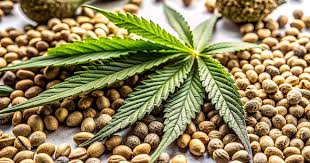kindseed
The Ultimate Guide to Growing Weed Plant Seeds

The Ultimate Guide to Growing Weed Plant Seeds
When it comes to cultivating cannabis, understanding weed plant seeds is crucial. These seeds are the foundation of your cannabis-growing journey, determining not only the strain and its characteristics but also influencing the overall yield and quality of your plants. In this comprehensive guide, we dive into the world of weed plant seeds, exploring their types, the importance of seed genetics, germination techniques, and best practices for growing healthy cannabis plants.
Types of Weed Plant Seeds
There are primarily three types of cannabis seeds: regular seeds, feminized seeds, and autoflowering seeds. Each type offers distinct advantages depending on your cultivation goals.
Regular Seeds
Regular seeds are the most traditional form of cannabis seeds, containing both male and female plants. This means that, while you can potentially grow both types of plants, there is also a risk of ending up with male plants that won’t produce buds. Regular seeds are often preferred by breeders looking to create new strains or maintain genetic diversity.
Feminized Seeds
Feminized seeds are bred to produce only female plants, which are the ones that yield the sought-after buds. This type of seed is particularly popular among commercial growers and home cultivators looking for a higher yield and more straightforward growing experience, as you eliminate the chance of male plants interfering with your crop.
Autoflowering Seeds
Autoflowering seeds are a relatively new addition to the cannabis seed market. These seeds are designed to flower based on age rather than light exposure. This means they can transition from the vegetative stage to the flowering stage without the need for a change in light cycles, making them ideal for beginner growers or those looking to cultivate discreetly. Autoflowering plants typically have a shorter lifecycle, allowing for quicker harvests.
Understanding Seed Genetics
The genetics of weed plant seeds play a vital role in the growth characteristics, potency, flavor profile, and overall quality of the cannabis plants. When selecting seeds, it is important to consider the following factors:
Strain Type
Cannabis strains are primarily categorized into three types: Indica, Sativa, and Hybrid. Indica strains are known for their relaxing effects, whereas Sativa strains tend to be uplifting and energizing. Hybrids combine characteristics of both Indica and Sativa, resulting in a variety of effects and growth patterns.
THC and CBD Levels
Different strains have varying levels of THC (tetrahydrocannabinol) and CBD (cannabidiol). Understanding the desired effects you want from your cannabis will help you choose the appropriate strain with the right balance of these compounds.
Growth Characteristics
Each strain has unique growth characteristics, including height, yield, flowering time, and resistance to pests and diseases. Researching these traits can help you select the best seeds for your growing environment and experience level.

Germination Techniques
Successfully germinating cannabis seeds is a critical first step in the cultivation process. There are several methods to germinate seeds, but here are two of the most popular:
Paper Towel Method
- Moisten two paper towels and place one on a plate.
- Distribute the seeds evenly on the towel and cover them with the second moistened towel.
- Cover the plate with another plate or plastic wrap to maintain humidity.
- Check periodically and keep the towels moist until the seeds sprout.
Soaking Method
- Place the seeds in a glass of distilled water for 12-24 hours.
- After soaking, transfer the seeds to a growing medium (like soil or rock wool).
Best Practices for Growing Healthy Cannabis Plants
Once your seeds have germinated, it’s time to ensure they thrive. Here are some best practices to follow:
Proper Lighting
Cannabis plants require different light cycles during the vegetative and flowering stages. In the vegetative phase, 18-24 hours of light is ideal, while the flowering phase requires around 12 hours of light and 12 hours of darkness to trigger bud development. Consider using LED or HID grow lights for optimal growth.
Nutrients and Watering
Provide your plants with a balanced diet of nutrients designed for cannabis growth. During the vegetative stage, nitrogen is essential, while during flowering, phosphorus and potassium become more critical. Additionally, ensure your plants receive the right amount of water—overwatering can lead to root rot, while underwatering can stunt growth.
Temperature and Humidity Control
Maintaining the right temperature and humidity is crucial for healthy cannabis growth. Ideally, temperatures should range between 70-85°F (20-30°C) during the day and slightly cooler at night. Humidity levels should be around 40-60% during the vegetative stage and dropped to 40% during the flowering stage to prevent mold.
Pest and Disease Management
Regularly inspect your plants for pests and diseases. Common issues include spider mites, aphids, and powdery mildew. Consider using organic pesticides or introducing beneficial insects to maintain a healthy grow environment.
Conclusion
Growing cannabis from weed plant seeds can be a rewarding adventure for both novices and experienced cultivators. By choosing the right seeds, understanding their genetics, and employing effective germination and growing techniques, you can cultivate healthy plants with a bountiful yield. Remember, patience and care are key in the cannabis growing process, and with time, you will reap the benefits of your hard work.
Whether you’re growing for personal use or looking to enter the commercial market, being informed about weed plant seeds is the first step towards successful cultivation.
